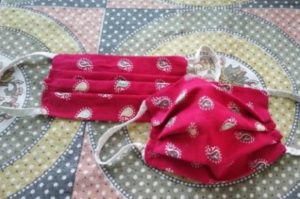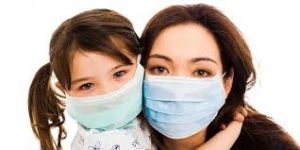By,
Dr. Sakshi Shail (Assistant Professor)
Satyam Fashion Institute
A surgical mask is a loose-fitting disposable device that creates a physical barrier between mouth and nose of the wearer and potential contaminants in the immediate environment. It also prevents a human being from direct transmission of infectious disease. Normal activities such as sneezing, coughing, breathing and speaking may release oral, dermal and nasopharyngeal bacteria that may cause post-operative infections. This review focuses on surgical face masks and their classification based on the performance like filtration efficiency, pressure difference, splash resistance etc. Further, the quality evaluation of surgical face masks and standards for manufacturing surgical face masks has also been reviewed. Keywords: Surgical face mask, operation procedures, hospital infections, pathogens, filtration efficiency.
Surgical mask fabric should be highly breathable, comfortable, soft and gentle on the skin. Lightweight and single-use fabrics used for the construction of surgical face masks.
A surgical face mask has the primary objective of protecting the medical professional and patient from fluids. Since face masks can be worn for long periods of time, the nonwoven fabric used to construct the face mask should be soft and gentle on the skin.
The custom of facemask-wearing began in Japan during the early years of the 20th century, when a massive pandemic of influenza killed between 20 and 40 million people around the world—more than died in World War I. There were outbreaks of the disease on every inhabited continent, including Asia (where it devastated India, leading to the deaths of a full 5% of the population). Covering the face with scarves, veils and masks became a prevalent (if ineffective) means of warding off the disease in many parts of the world, until the epidemic finally faded at the end of 1919.
How should face mask be worn?
- Always wash your hands with soap and water before touching the face mask.
- Remove mask from the dispenser or box and make sure the masks do not have any holes or tears.
- Make sure you determine which side is the top and which is the front of the mask, so you can properly wear the mask.
- Face masks with ear loops: hold by the ear loops and put the loops around each ear.
- Face masks with ties: bring mask to your nose and place the ties over your head to secure with a tie.
- Face masks with bands: hold mask to your nose and pull the top strap over the crown of your head and pull the bottom strap over your head so its at the nape of your neck.
- Pull the mask over your mouth and chin
Masks can be divided in two categories:
- Based on function
- Based on usage
Based on COVID-19 prevention, it’s generally three types:
- homemade cloth face mask
- surgical mask
- N95 respirator
Homemade face masks


Homemade face masks only offer a small degree of protection, but they may help prevent the spread of SARS-CoV-2 from asymptomatic people. The CDC recommends using them in public settings, as well as practicing social distancing and proper hygiene.
Surgical masks


Surgical masks can’t protect against infection with SARS-CoV-2. Not only does the mask not filter out smaller aerosol particles, but air leakage also occurs through the sides of the mask as you inhale. Surgical masks can vary in design, but the mask itself is often flat and rectangular in shape with pleats or folds. The top of the mask contains a metal strip that can be formed to your nose.
N95 respirators


N95 respirators can protect against smaller respiratory droplets, such as those containing SARS-CoV-2. However, the CDC currently doesn’t recommend trusted Source their use outside of healthcare settings.
Benefits of wearing mask:
- Cloth face masks can be made at home from common materials, so there’s an unlimited supply.
- They may lower the risk of people without symptoms transmitting the virus through speaking, coughing, or sneezing.
- They’re better than not using any mask and offer some protection, especially where social distancing is hard to maintain.
- Protect the wearer from sprays, splashes, and large-particle droplets.
- Prevent the spread of potentially infectious respiratory secretions from the wearer to others.
References:
http://jairjp.com/NOVEMBER%202013/02%20CHELLAMANI%201.pdf
https://qz.com/299003/a-quick-history-of-why-asians-wear-surgical-masks-in-public/
https://blog.universalmedicalinc.com/wearing-face-mask-important/
Satyam Fashion Institute, Noida